Shibazuke is a popular side dish in Japan, often enjoyed alongside meals or as a flavorful topping for rice and sushi. Its vibrant appearance and unique taste make it a standout addition to traditional Japanese cuisine, where pickled vegetables, or tsukemono, play an important role in enhancing the dining experience. In this article, we will delve deeper into the history, preparation, and culinary uses of this intriguing pickle, shedding light on its significance in Japanese culinary traditions.
What is Shibazuke?
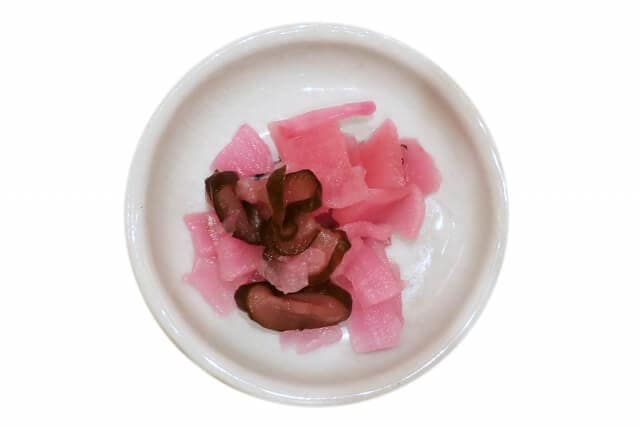
Shibazuke is a traditional Japanese pickle typically made from cucumbers, eggplant, and sometimes perilla leaves (shiso) pickled in a mixture of salt, red shiso leaves, and vinegar. The pickling process gives shibazuke its distinctive bright pink or red color. It is known for its slightly salty and tangy flavor with a hint of shiso.
Locals served the Shibazuke as a side dish or accompaniment to meals in Japan, and it is particularly popular as a topping for rice or sushi. The vibrant color and unique flavor make it a visually appealing and tasty addition to various Japanese dishes. It is one of the many types of tsukemono, which are traditional Japanese pickled vegetables that come in a variety of flavors and colors.
Shibazuke History
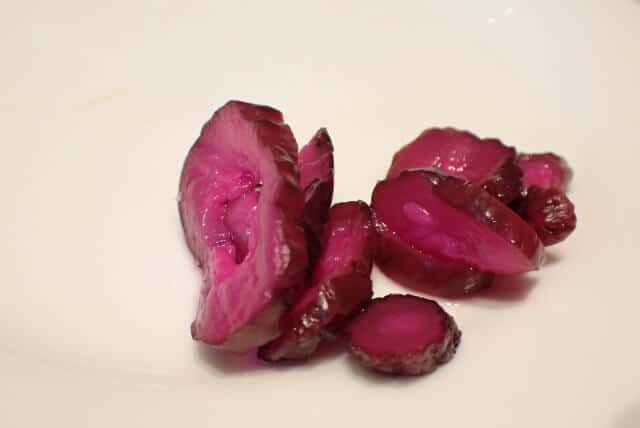
In Kyoto, three major pickles include “Senmaizuke,” “Shibazuke,” and “Sugukizuke.” Among these, Shibazuke stands out as the most popular nationwide. It originated in Ohara, home to ancient temples like Sanzen-in Temple, and boasts a history spanning over 800 years. Shibazuke has a fascinating history that traces back to Japan’s late Heian period. During this time, there was a significant conflict between the Minamoto clan and the Taira clan. In the year 1185, the Taira clan met its demise in the Battle of Dannoura. When the Taira clan fell, Taira no Kiyomori’s daughter, Kenreimonin Tokuko, married Emperor Takakura and became the empress.
Kenreimonin spent the rest of her life alone, reminiscing about her fallen Heike clan and her departed son. In an effort to help her remember her noble days at the Imperial Palace, the local people of Ohara offered her pickled purple perilla leaves. These purple leaves were a symbol of the highest-ranking members of the imperial family. Kenreimonin was so delighted with the purple color that she named these pickles “murasakiha pickles,” and over time, this name evolved into Shibazuke. And so, the name Shibazuke was born, rooted in this touching history.
Shibazuke dishes
Seasoned eggplant with pickled vegetables
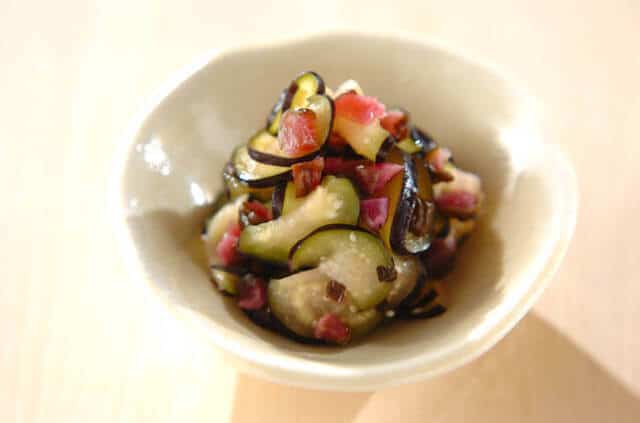
Shiba-zuke marinated eggplant using Shiba-zuke and Shiba-zuke’s pickling juice. It’s refreshing to eat, and the texture of pickled vegetables is a great accent.
Boiled cabbage with pickled vegetables
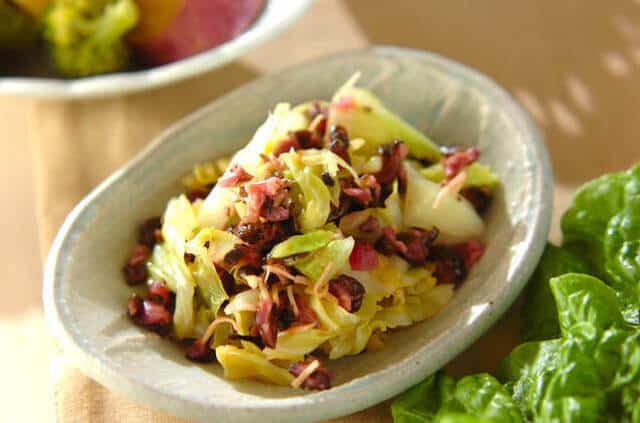
The crunchy shibazuke is a perfect match for the soft, boiled cabbage. Since the cabbage is boiled, the flavors blend well and you can eat a lot of it.
Shibazuke and cheese bruschetta
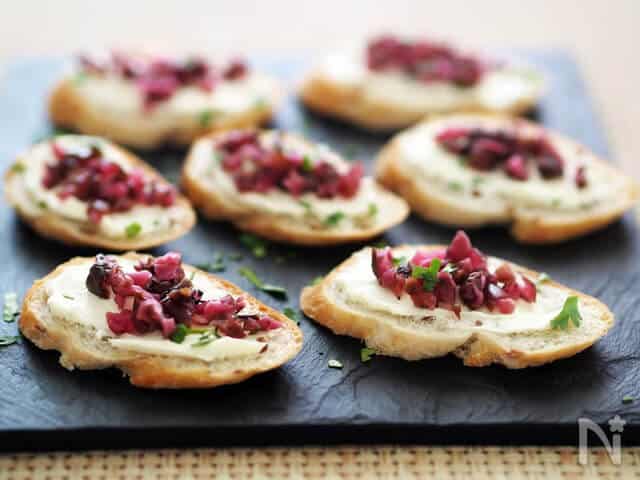
The purple shibazuke is very colorful and easy to make, yet it looks stylish. The moderate sourness and saltiness of Shibazuke goes well with cream cheese, and goes well with wine.
Health Benefits
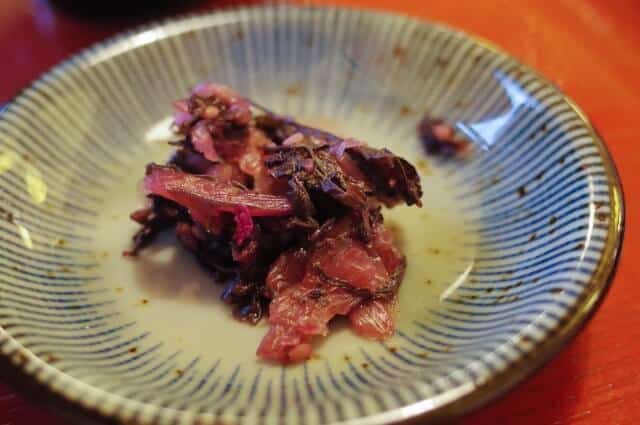
Shibazuke, like other traditional Japanese pickles, can offer some health perks, but is vital to enjoy it in moderation as part of a balanced diet. Here are some potential benefits of eating Shibazuke:
Shibazuke is fermented, which means it contains probiotics-friendly bacteria that can promote a healthy gut, aiding digestion and overall well-being. It’s also low in calories, making it a tasty way to add flavor to your meals without piling on extra calories. Plus, the vegetables used, like cucumbers and eggplants, contain fiber, which is great for digestion and regular bowel movements. Additionally, Shibazuke includes red shiso leaves, which have antioxidants that can help fight harmful molecules in your body, reducing stress and inflammation. It also offers a smattering of vitamins and minerals, like vitamin K from perilla leaves, adding some extra nutritional value to your diet. Nevertheless, remember to enjoy Shibazuke in moderation due to its salt content.
Shibazuke FAQ
- What does Shibazuke taste like?
-
Shibazuke has a distinctive taste characterized by its tangy, slightly salty, and mildly sweet flavor profile. The primary ingredients, which often include cucumbers, eggplant, and perilla leaves (shiso), are pickled in a mixture of salt, red shiso leaves, and vinegar. This pickling process imparts a unique and refreshing taste to Shibazuke. The red shiso leaves contribute a subtle herbal and aromatic quality to the pickle, while the vinegar adds a pleasant acidity.
- What are the main ingredients of Shibazuke?
-
Shibazuke’s primary ingredients include cucumbers for a refreshing crunch, Japanese or Asian eggplants for unique flavor and texture, and red shiso leaves (perilla leaves) for their distinctive color and subtle herbal taste. The pickling process involves salt to draw out moisture and vinegar for tangy flavor and preservation.
Shibazuke Recipe
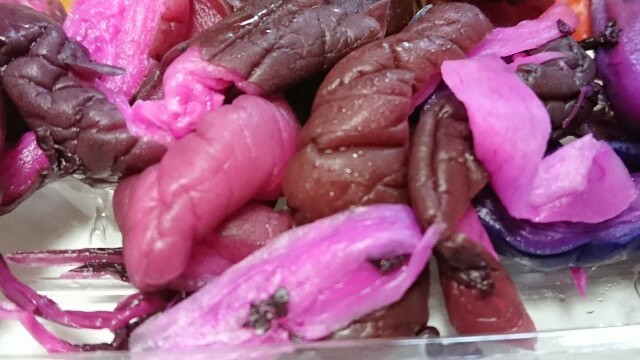
Shibazuke Ingredients
| Ingredients of Shibazuke for 15 persons | Measurement |
|---|---|
| Eggplant | 10,000g |
| Perilla fruit | 1,000g |
| Myoga | 10g |
| Cucumber | 2,000g |
| Green chili | 500g |
| Salt | 550g |
How to make Shibazuke?
Remove the stems from the eggplant, wash and cut into 5mm thick pieces. Cut the green chili pepper in half lengthwise. Cut the cucumber diagonally. Then, wash the perilla branches, remove the leaves, roughly chop, and mix with the eggplant.
Slice the ginger into thin slices.
Fill a container with a mixture of eggplant and mustard leaves to a thickness of about 10 cm, sprinkle with salt, and alternately pickle the Japanese ginger, cucumber, and green chili pepper.
Place a generous amount of shiso leaves on top. After soaking for a day and night, if a black pickle juice comes out, drain it and throw it away, and store it in a state where the clean juice is 3 to 4 cm above the lid.
Where to buy Shibazuke?
Nishidaya (京つけもの ニシダや)
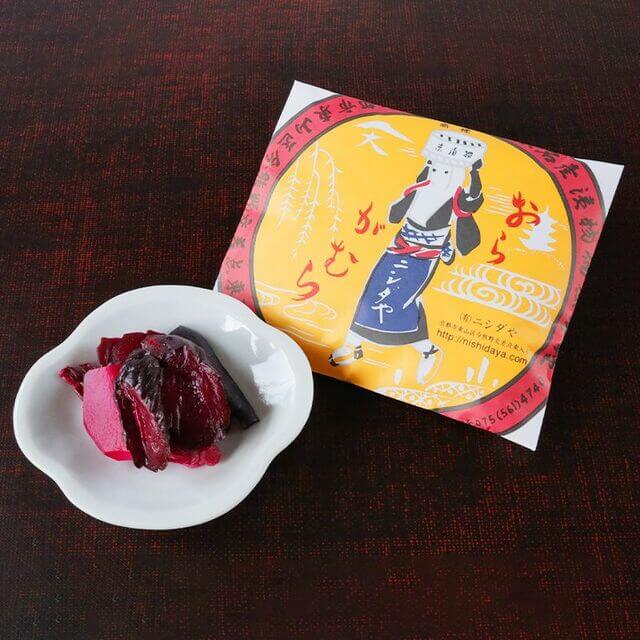
Speaking of Shiba-zuke, many people think of this “Oragamura-zuke.” It has just the right amount of sourness, not too sour, and is easy to eat. There are no directly managed stores other than the main store, but perhaps because there are many local fans, you can often see them at department stores and major supermarkets.
Shibaku (志ば久)
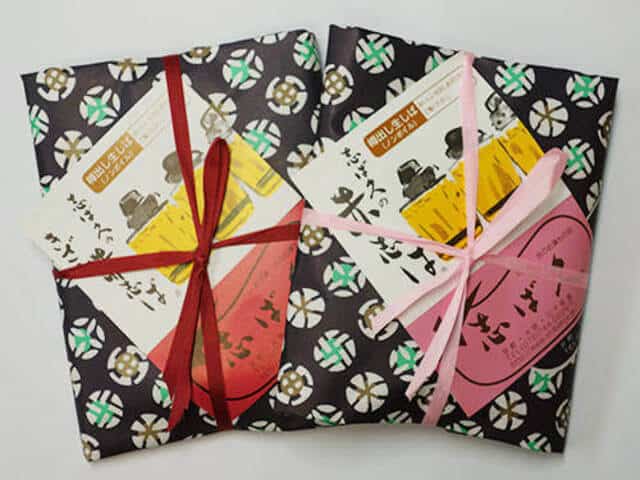
At Shibaku, they only use high-quality domestic ingredients, mainly from the Kyoto area, including vegetables grown on their own farm, as well as Kyoto vegetables and seasonal vegetables. By preserving the ancient seeds and using plenty of perilla grown in a favorable climate, it is possible to make fragrant and colorful “shibazuke” and “umeboshi.”
Higashiyama Yaoi (東山八百伊)
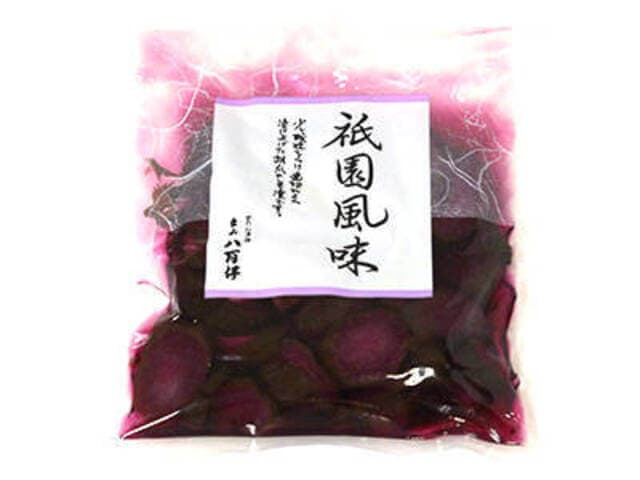
This popular restaurant was featured in Buratamori x Sarameshi as a famous restaurant loved by Yasujiro Ozu . It’s close to Kodaiji Temple and Kiyomizu Temple, so it’s convenient for shopping while sightseeing. The famous “Kodaiji Takuwan” and “Mountain Potato Wasabi Flavor” are delicious, but the Shiba-zuke “Gion Flavor” is recommended.
Final Thoughts
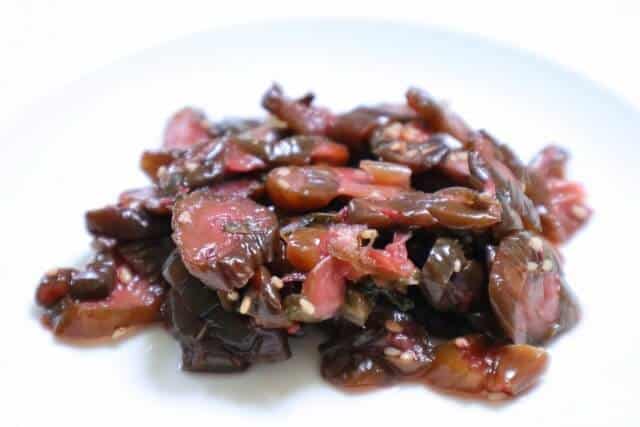
Shibazuke is not just a pickle but a vibrant slice of Japanese culinary heritage. Through its tangy taste and colorful appearance, it adds a burst of flavor and culture to meals. By exploring the history and ingredients of Shibazuke, we hope you’ve gained a deeper appreciation for the art of pickling in Japan and its potential health benefits when enjoyed in moderation. So, whether you’re savoring it with sushi or rice, remember that each bite carries a story of tradition and taste, making Shibazuke not only a treat for your taste buds.
You can check some Japanese dishes below that we know you would like to try too.
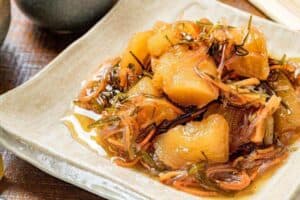
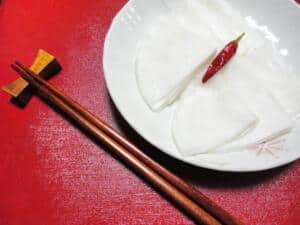
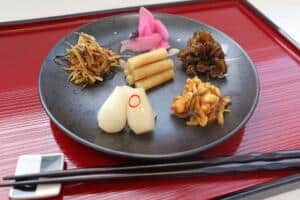

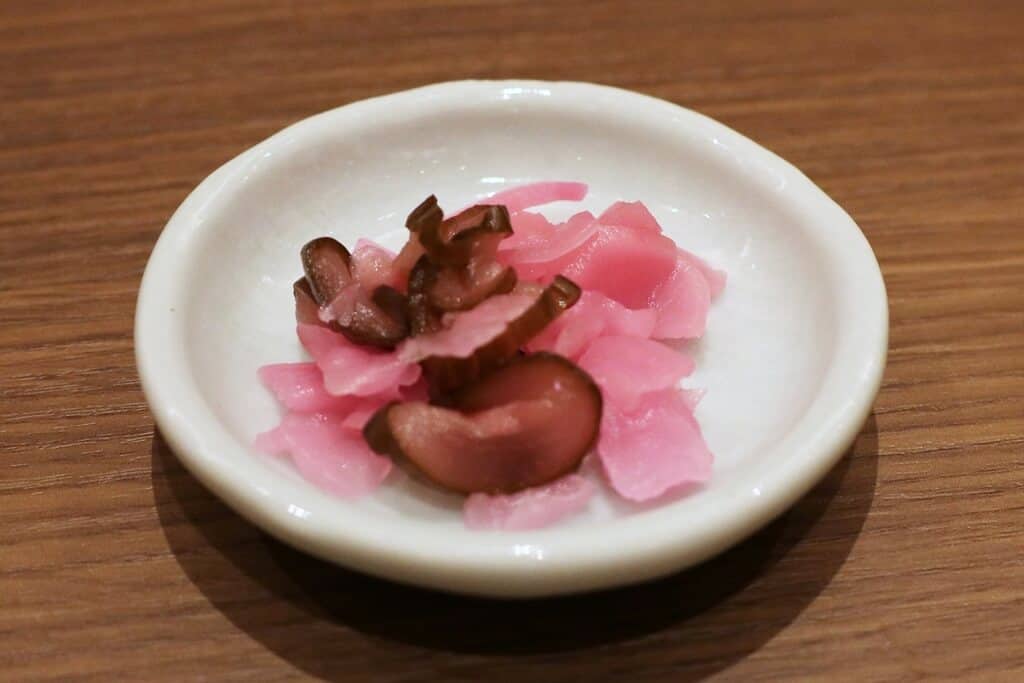
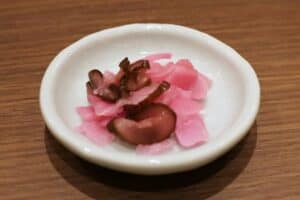
Comments